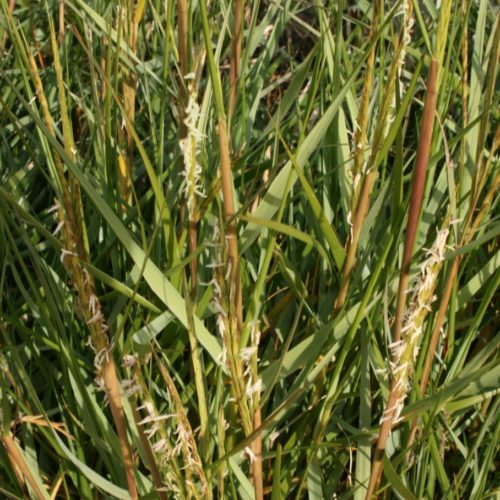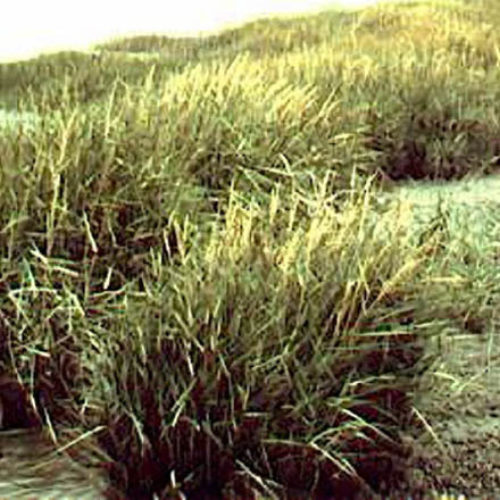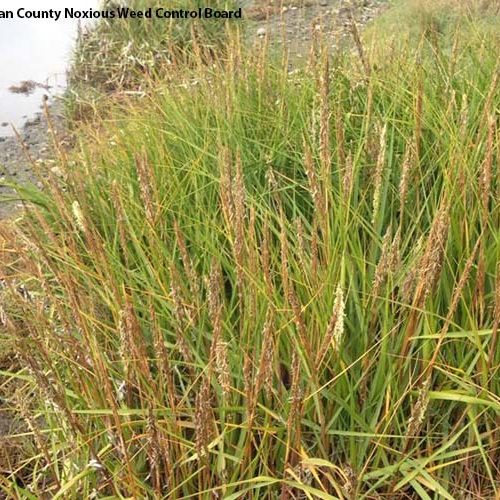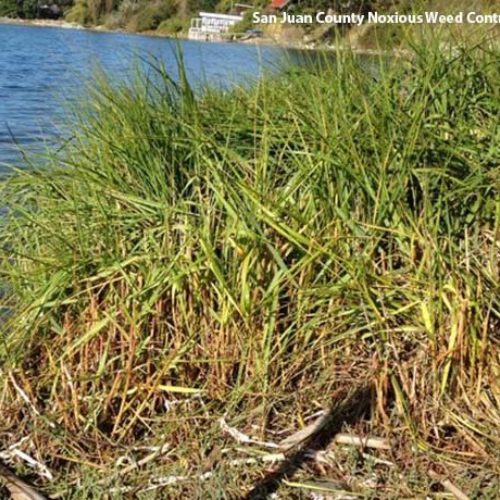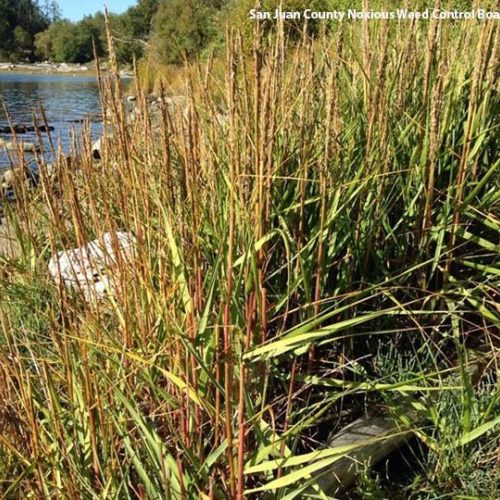Common Cordgrass
Spartina anglica
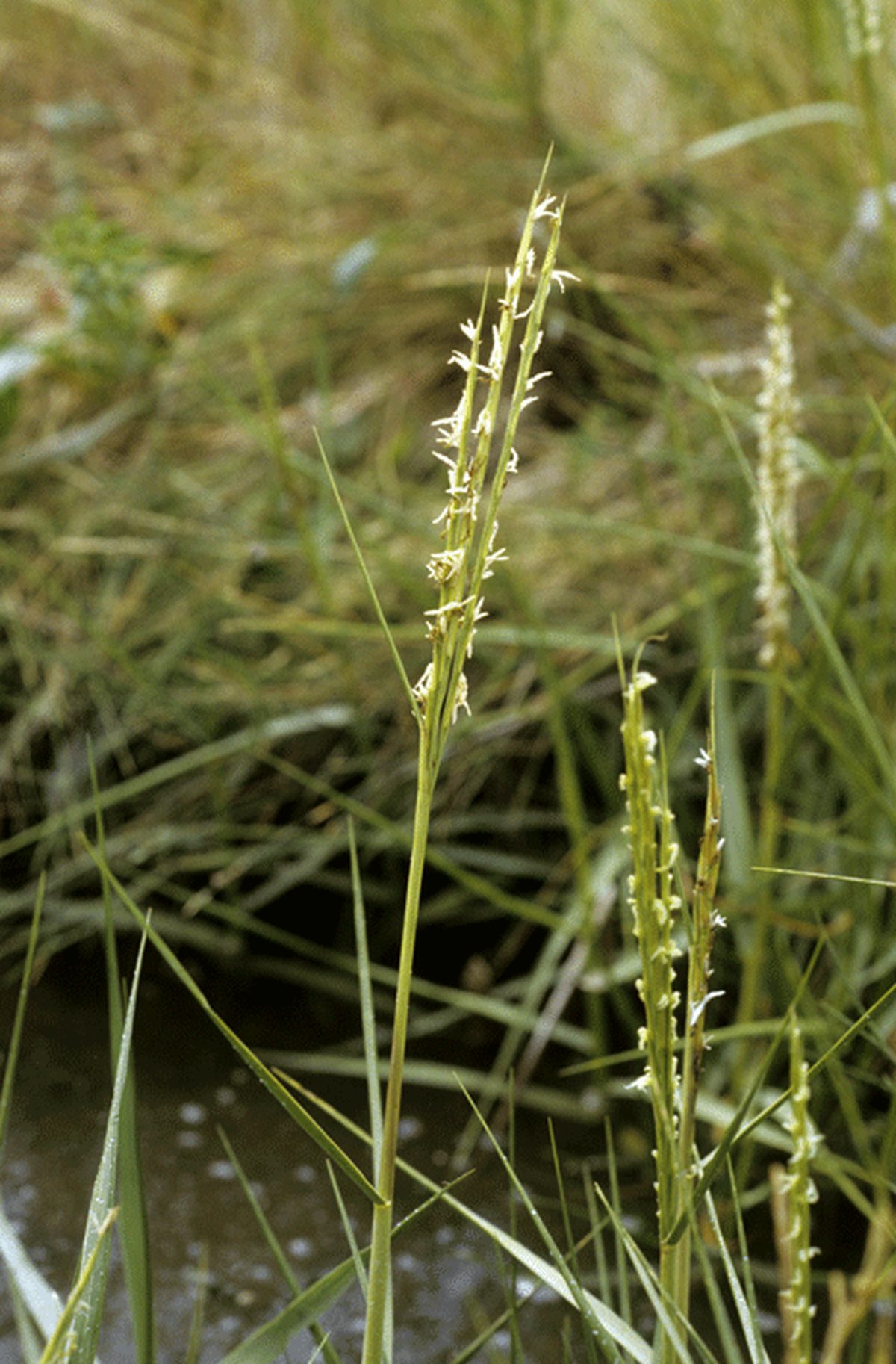
Family: Poaceae
Weed class: A
Year Listed: 1990
Native to: Northern Europe
Is this Weed Toxic?:
not known to be
Legal listings:
WAC 16-752; WSDA Quarantine list (prohibited plant list)
Why Is It a Noxious Weed?
In general, the Spartina genus is considered highly invasive and one of the most aggressive worldwide. Spartina displaces native species, destroys wildlife habitat, interferes with recreational activities and is difficult and expensive to control.
How would I identify it?
General Description
It is a stout, rhizomatous salt marsh grass that spreads by clonal growth. It may grow up to 3.25 feet tall and be variable in it characteristics as a result of its hybrid origins.
Flower Description
The flowers occur in numerous, upright, contracted clusters (panicles), which consist of closely overlapping spikelets in two rows on one side of the rachis (stem).
Leaf description
Leaves have ligules that are a fringe of hairs. Leaf blades are either flat or in-rolled and are .2 to .5 inches wide and may be persistent or falling.
Stem description
Stems grow to be 2 inches to 3.25 feet tall and are stout, around 0.2 inches wide.
Fruit Seed Description
Common cordgrass can produce viable seed though seed production is variable.
Where does it grow?
Common cordgrass grows in the intertidal zone and can tolerate a wide range of environmental conditions. It can grow in a variety of soils including clays, fine silts, organic muds, sands and shingle. It can tolerate inundation for many hours. Please click here to see a county level distribution map of common cordgrass in Washington.
How Does it Reproduce?
It can spread by seed, rhizomes, tillering and rhizome fragments.
How Do I Control It?
Mechanical Control
Seedlings can be pulled out effectively. Care must be taken to remove both shoots and roots. Seedlings generally begin tillering late in their first growing season. Once the plant has tillered, hand-pulling may break off portions of root, allowing the plant to resprout. Pulling or digging established clones is difficult and largely ineffectual. Mowing infestations can contain growth, limit seed set, and eventually kill the plants. To be effective, clones must be mowed repeatedly, beginning with initial spring green-up and continued until fall die-back.
Cultural Control
Diking can be used as a containment measure, since dikes confine the lateral spread of rhizomes. Dikes also remove tidal action, thereby inhibiting nutrient flow and oxygen exchange. In addition, dikes can be used to flood areas, which will eventually bring about Spartina death.
Herbicide Control
Please refer to the PNW Weed Management Handbook, or contact your county noxious weed coordinator.
For More Information
WSDA's Spartina Eradication Program
See our Written Findings for more information about common cordgrass (Spartina anglica).
Whatcom County NWCB Fact Sheet on Spartina spp.



